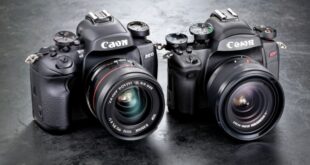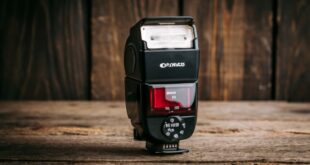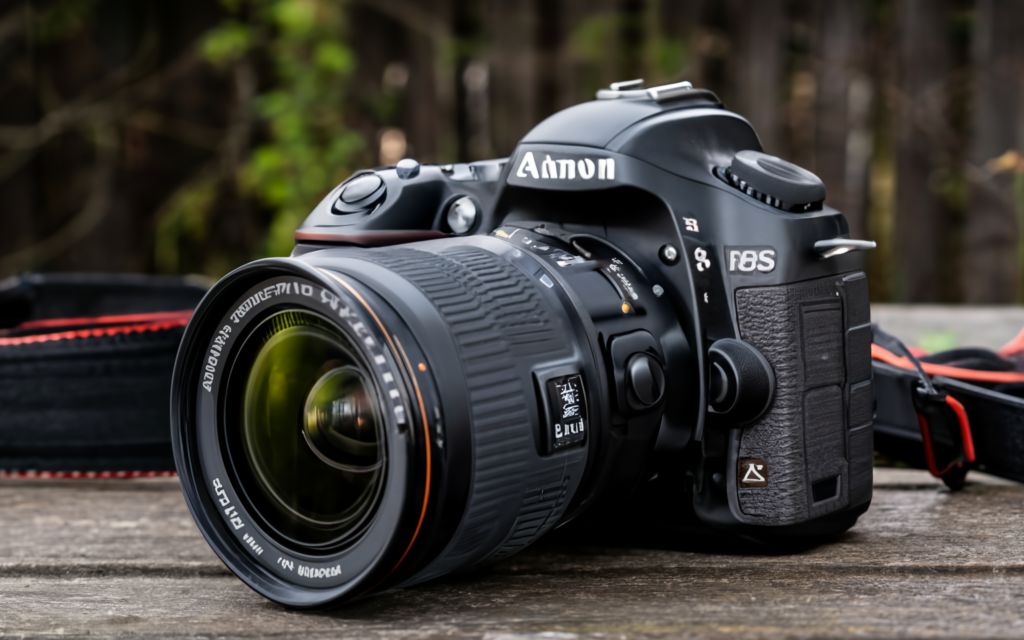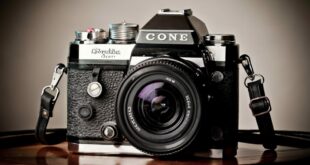Hey there, photography enthusiasts! Are you ready to take your skills to the next level? In this comprehensive guide, we’ll dive into the world of DSLR camera settings, equipping you with the knowledge to capture stunning images like a pro. Whether you’re a beginner or a seasoned photographer, understanding these basic settings will help you unlock the full potential of your DSLR camera. So, let’s get started!
Introduction: Unleashing the Power of DSLR Cameras
Before we delve into the intricacies of DSLR camera settings, let’s take a moment to understand why they are crucial to your photography journey. DSLR cameras offer unparalleled versatility, allowing you to have complete control over your images. By manipulating various settings, you can capture the perfect exposure, achieve desired depths of field, freeze fast-moving subjects, and create stunning artistic effects. Now, let’s explore the seven essential DSLR camera settings that will revolutionize your photography.
1. Shutter Speed ⏱️
The shutter speed, measured in seconds or fractions of a second, refers to the duration the camera’s shutter remains open. It determines how long light enters the camera sensor, thus affecting the motion blur in your images. Fast shutter speeds freeze action, ideal for capturing sports or wildlife moments, while slower speeds create a sense of motion. Experiment with different shutter speeds to add drama and creativity to your compositions.
2. Aperture 📸
The aperture, represented by the f-stop number, controls the size of the camera’s lens opening. It impacts two crucial aspects: the amount of light entering the camera and the depth of field (DOF) in your images. A wide aperture (low f-stop number) creates a shallow DOF, perfect for isolating subjects from the background. On the other hand, a narrow aperture (high f-stop number) increases the DOF, ensuring that both foreground and background are in sharp focus.
3. ISO Sensitivity 🌞
The ISO sensitivity setting determines the camera’s sensor’s response to light. Higher ISO values amplify the sensor’s sensitivity, making it ideal for low-light situations. However, a higher ISO can introduce digital noise, affecting the overall image quality. Finding the right balance between ISO and other settings is crucial to ensure well-exposed, noise-free images.
4. White Balance ☀️
White balance ensures accurate color reproduction in your images by adjusting the camera’s perception of different lighting conditions. It compensates for the color cast caused by different light sources such as daylight, incandescent, or fluorescent lights. By selecting the appropriate white balance setting or manually customizing it, you can achieve accurate colors and preserve the intended mood of your photographs.
5. Metering Mode 📊
Metering mode determines how the camera evaluates the brightness of a scene to calculate the optimal exposure. Different metering modes, such as matrix/evaluative, center-weighted, and spot metering, offer varying levels of control and accuracy. Understanding each mode’s advantages and limitations will help you capture well-exposed photos in various lighting situations.
6. Focus Mode 🔍
Focus mode allows you to control how the camera locks focus on the subject. Depending on the situation, you can choose between single focus (ideal for static subjects) or continuous focus (perfect for capturing moving subjects). Additionally, you can also select various focus points or use manual focus to ensure precise focusing.
7. Shooting Mode 📷
The shooting mode determines the level of control you have over the camera settings while capturing an image. Whether you prefer full manual control, semi-automatic modes like aperture priority or shutter priority, or fully automatic mode, each offers different benefits and limitations. Understanding the shooting modes will empower you to adapt to various shooting scenarios and unleash your creativity.
Advantages and Disadvantages of Basic DSLR Camera Settings
1. Shutter Speed
Advantages: Fast shutter speeds freeze action, capturing crisp images of fast-moving subjects. They allow you to experiment with creative techniques like freezing water droplets or capturing motion blur.Disadvantages: Extremely fast shutter speeds may result in underexposure, requiring sufficient ambient light or higher ISO settings. They may also limit the amount of light reaching the sensor, necessitating wider apertures or higher ISO values.
2. Aperture
Advantages: Wide apertures create a shallow DOF, drawing attention to the subject and blurring the background. Narrow apertures increase the DOF, ensuring sharpness from the foreground to the background.Disadvantages: Wide apertures may result in a smaller area of focus, requiring precise focusing techniques. Narrow apertures may introduce diffraction, reducing overall image sharpness.
3. ISO Sensitivity
Advantages: Higher ISO settings allow you to shoot in low-light conditions without compromising exposure. They provide flexibility in challenging lighting situations and reduce the need for slower shutter speeds or wider apertures.Disadvantages: Higher ISO values increase digital noise, resulting in degraded image quality. Balancing ISO with other settings is crucial to minimize noise while maintaining proper exposure.
4. White Balance
Advantages: White balance presets help achieve accurate color reproduction in different lighting conditions. Custom white balance enables precise color control, maintaining the desired mood and atmosphere.Disadvantages: Incorrect white balance settings can distort the colors in your images, resulting in unrealistic or unfavorable hues. Manual adjustments may be required for complex lighting situations.
5. Metering Mode
Advantages: Different metering modes offer flexibility and accuracy in determining the correct exposure. They allow you to prioritize specific areas or ensure overall balanced exposures in different lighting scenarios.Disadvantages: Metering modes may not always accurately interpret complex lighting situations. Understanding their limitations and compensating accordingly is necessary for consistent exposure results.
6. Focus Mode
Advantages: Different focus modes provide flexibility in capturing both static and moving subjects. Manual focus enables precise control over focusing, ensuring critical sharpness.Disadvantages: Incorrect focus modes or settings may result in missed focus or soft images. Understanding the subject and shooting conditions will help you choose the most suitable focus mode.
7. Shooting Mode
Advantages: Different shooting modes offer various levels of control and automation, catering to different shooting scenarios. They allow you to focus on composition and creativity without worrying about technical details.Disadvantages: Fully automatic modes may not always yield the desired results, limiting your creative control. Manual mode requires a deeper understanding of camera settings and may require more time to set up.
Complete Information about Basic DSLR Camera Settings
| Setting | Description |
|---|---|
| Shutter Speed | The duration the camera’s shutter remains open, affecting motion blur. |
| Aperture | The size of the camera’s lens opening, influencing exposure and depth of field. |
| ISO Sensitivity | The camera sensor’s sensitivity to light, balancing exposure and noise. |
| White Balance | The camera’s adjustment to different lighting conditions for accurate color reproduction. |
| Metering Mode | The camera’s evaluation of brightness to determine the optimal exposure. |
| Focus Mode | The method used to lock focus on the subject, ensuring sharpness. |
| Shooting Mode | The level of control and automation while capturing an image. |
Frequently Asked Questions (FAQ)
1. How does shutter speed affect my photos?
Shutter speed determines the amount of motion blur in your images. Slower speeds capture motion blur, while faster speeds freeze action.
2. What is depth of field, and how does aperture control it?
Depth of field refers to the range of sharpness in an image. Aperture controls the DOF, with wider apertures creating a shallow DOF and narrower apertures increasing it.
3. Is high ISO always better in low-light conditions?
While higher ISO settings allow for better exposure in low-light situations, they also introduce digital noise. Finding the right balance is crucial for minimizing noise while maintaining good exposure.
4. How does white balance affect the colors in my photos?
White balance ensures accurate color reproduction by compensating for different lighting conditions. Incorrect white balance settings can lead to unrealistic or undesirable color casts.
5. Which metering mode should I use in challenging lighting situations?
In complex lighting scenarios, spot metering or manual exposure adjustments can help achieve accurate exposures for specific areas in the frame.
6. When should I use manual focus instead of autofocus?
Manual focus provides precise control over focusing and is particularly useful in situations where autofocus may struggle, such as low-light conditions or when shooting through obstacles.
7. Which shooting mode is best for beginners?
Semi-automatic modes like aperture priority (Av) or shutter priority (Tv) allow beginners to focus on specific aspects of photography while the camera handles other settings.
8. Can I mix and match different camera settings?
Absolutely! Experimenting with different combinations of settings is key to developing your unique photographic style and achieving desired results in various shooting scenarios.
9. How can I prevent overexposure or underexposure in my photos?
Understanding and balancing the exposure triangle (shutter speed, aperture, and ISO) is crucial for achieving proper exposure. Metering modes and exposure compensation can also help fine-tune exposure settings.
10. Are there any smartphone apps to assist with DSLR camera settings?
Yes, several smartphone apps offer assistance with DSLR camera settings, including light meters, depth of field calculators, and remote control functionality.
11. What should I consider when choosing a DSLR camera?
Consider factors like sensor size, megapixel count, autofocus system, video capabilities, and lens compatibility when selecting a DSLR camera that aligns with your photography needs and aspirations.
12. How can I learn more about advanced DSLR camera settings?
There are numerous resources available, ranging from online tutorials and photography forums to books and workshops. Practice, experimentation, and continuous learning are key to mastering advanced DSLR camera settings.
13. What are the benefits of shooting in RAW format?
Shooting in RAW format allows for greater control in post-processing, as it captures all the data recorded by the camera sensor. It provides flexibility in adjusting exposure, white balance, and recovering details in shadows or highlights.
Conclusion: Master Your DSLR Camera Settings Today!
Congratulations! You are now equipped with the knowledge to harness the power of basic DSLR camera settings. By understanding and experimenting with shutter speed, aperture, ISO sensitivity, white balance, metering mode, focus mode, and shooting mode, you can elevate your photography to new heights. Remember, practice is key to mastering these settings, so grab your camera and start exploring the endless possibilities. Unleash your creativity, capture stunning images, and make every moment memorable.
Now, it’s time to take action and embark on your photography journey. Grab your DSLR camera, venture into the world, and let your creativity shine. Capture the beauty that surrounds you and share your unique perspective with the world. Remember, each click is an opportunity to tell a story, evoke emotions, and create lasting memories. So, go out there and capture the world through your lens!
Closing Statement: Disclaimer for Budding Photographers
Photography, like any art form, is a subjective pursuit. While mastering the basics of DSLR camera settings is essential, it’s equally important to develop your own style and vision. The settings discussed in this article are a starting point, and you should experiment, adapt, and break the rules to create images that resonate with you. Remember, true excellence in photography comes from a blend of technical knowledge, artistic expression, and a unique perspective. So, let your passion guide you, embrace the journey, and have fun capturing the world through your lens!



